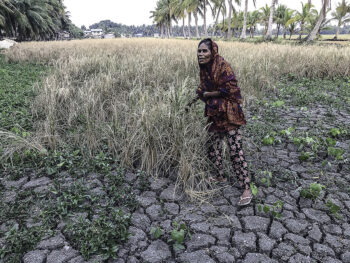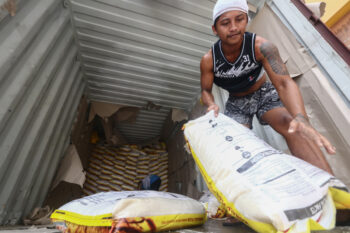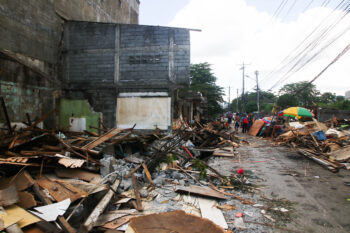DAVAO CITY (MindaNews/30 January) — There is no doubt about it: one of the greatest missionaries whose presence in Mindanao – extending from Caraga Region to Bukidnon and Davao – made a major impact on the lives of the indigenous people he encountered was Fr. Saturnino Urios, S.J. Coming to Mindanao 278 years after the first Jesuit reached the mouth of the Butuan River in 1596, Fr. Urios today is considered a legend among the communities he served, especially those along the Agusan River.
Fr. Urios’ ministry has to be contextualized within the over-all Jesuit mission across Mindanao. From the Caraga Region, in 1614, they were forced to cede this mission in northeastern Mindanao area to the Recollects as they concentrated their mission work in the Zamboanga area and later on expanded to Cotabato. This led to hopeful beginnings as they reached more Lumad communities. But in 1768, the Jesuits were expelled from the Las Islas Filipinas. In 1773, the Jesuit Order was dissolved by the Pope but only to restore it in 1814. In June 1859, ten Jesuits returned to the Philippines. It was only two years later that they returned to Mindanao, beginning a mission among Tirurays who settled in Tamontaka in what is now Cotabato City.
In 1871, Fr. Francisco Javier Martin Luengo, S.J. took a sailboat to Surigao and eventually reached the coastal villages of Bislig, Tandag, Higakit, Cantilan and Dinagat. He also penetrated the interior villages of Mainit, Butuan and Bunawan. Four years later, he would be joined by Fr. Urios who would expand the outreach of the Jesuit missionaries in the eastern part of Mindanao. In him, the new dynamism of the Jesuit mission found its full expression in Agusan as exemplified by Fr. Urios who would stand out as an extraordinarily dedicated one in his missionary accomplishments. Among other things he established schools and that is why across the Diocese of Butuan, most schools are named after him. Among these, the premier academic institution is the Fr. Saturnino Urios University (FSUU) in Butuan City.
After his missionary engagements in the Caraga Region and later in Bukidnon and Davao, Fr. Urios retired in Manila where he died on October 27, 1916. To celebrate the 100th death anniversary of Fr. Urios, the FSUU decided to hold a conference to celebrate his life and ministry. This conference with the theme “MINDANAO CHURCH AND SOCIETY: CELEBRATING THE LIFE AND MISSION OF FR. URIOS, S.J.” was held at FSUU last 27 January 2017. More than 300 FSUU faculty and staff, priests, religious and lay leaders of the Diocese of Butuan and guests from other parts of the country attended this event. Fr. John Christian U. Young (FSUU President), Fr. Randy Jasper C. Odchigue (FSUUVP for Academic Affairs and Research) and Dr. Arlyn M. Floreta (the Dean of the Teacher Education Program of FSUU were the ones who mainly organized this event.
There were two keynote speakers at the conference, both Filipino Jesuits. This was most appropriate as the Jesuits were the first to establish a mission in the whole of Mindanao, particularly in Butuan City. The first keynote speaker was Sch. Amado T. Tumbalik Jr., S.J. an archivist of the Society of Jesus who spoke on “The Mission Itinerary of Fr. Saturnino Urios, SJ, Acording to Jesuit Catalogues and Letters. The second keynote speaker was Fr. Antonio Francisco B. de Castro, S.J. of the Loyola School of Theology who spoke on the topic “Urios and Imagining Mindanao: Historical Background and Contemporary Questions.”
A number of scholars, researchers and pastoral workers gave short talks during this forum that dealt with the life and mission of Fr. Urios. Among them were: Fr. Joesilo C. Amalia of the Diocese of Butuan (P. Saturnino C. Urios, SJ “El Apostol de Agusan 1843-1916), Fr. Isaac Manuel V. Moran also of Butuan Diocese (Glimpses of Fr. Saturnino Urios, SJ), Mr. Honey B. Tabiola of FSUU (Mission, Metaphors, and the Manobos: Self-Representations of Fr. Saturnino Urios, S.M. in his Agusan Mission), Bro. Karl Gaspar, CSsR (Reaching out to the Lumads in an Indi-genius Manner: The Urios Legacy), and Fr. Norlan H. Julia, SJ (Peace through Warfare: The Ignatian Influence on Urios’ Mission Work).
Since this event was co-sponsored by the Philippine Missiological Association, there were also missiological papers that tangentially related to the ministry of Fr. Urios. Thus the following speakers with their respective topics also presented short papers at this event: Msgr. Manuel G. Gabriel (The Fifty-Year Journey of BECs in the Philippines: Ten Lessons), Mr. Guilbert R, Mantala (Living the BEC Culture of St. Paul University, Surigao), Fr. Adorable M. Castillo CICM (BEC and Intentional Communities in the Age of Globalization), Fr. Christmar I. Daguno (The Care of the Earth: Prospects and Challenges of Catholic Education in the Philippines), Mr. Mark Louie B. Desoloc (Ignatian Pedagogy: A Basis for an Integrated and Holistic Formation), Mr. Alvin Eballo (Pagsusuri sa Declaracion de la Doctrina Christian en Idioma Tagalog ni Fray Juan de Oliver OFM), Fr. Michael G Layugn SVD (The Kalingas’ Concept of Justice From Retributive Justice to Restorative Justice: A Theological Review), Prof. Thomas Mooren OFMCap (Prophecy and Holiness from the deathbed of Muhammad Rasul allah to the peaceful valley of Ibrahim Khalil Alla) and Fr. John Christian U. Young (Mary among the Muslims and the Possibilities for Dialogue).
Among the challenges that were raised during this forum were the following: 1) How to continue popularizing the legacy of Fr. Urios among the different schools and church institutions of the Diocese of Butuan and even across the Caraga Region, 2) How to encourage more research studies on Fr. Urios’ life and mission and have these published and be made available to teachers and students and parishioners, 3) How the FSUU – being the premier academic institution in the Caraga Region – in the long-term, could allocate more resources and develop personnel who can be part of a Center for Caraga Studies as part of a collaborative effort of Mindanawons (in academic institutions and civil society agencies) to develop the Mindanao Studies Program that seem to be an urgent need of the times. [Redemptorist Brother Karl Gaspar is Academic Dean of the Redemptorists’ St. Alphonsus Theological and Mission Institute (SATMI) in Davao City and a professor of Anthropology at the Ateneo de Davao University. Gaspar is author of several books, including “Desperately Seeking God’s Saving Action: Yolanda Survivors’ Hope Beyond Heartbreaking Lamentations” and two books on Davao history launched in December 2015. He writes two columns for MindaNews, one in English (A Sojourner’s Views) and the other in Binisaya (Panaw-Lantaw).]







